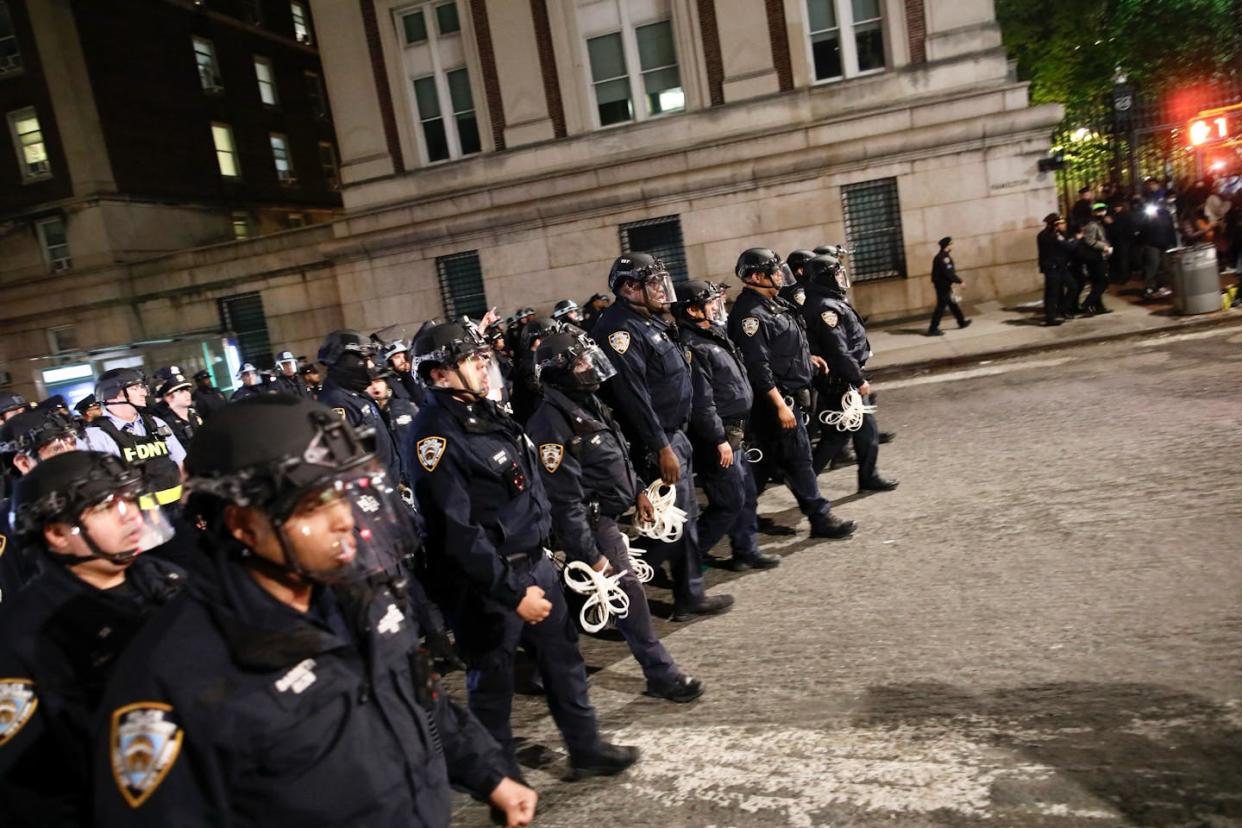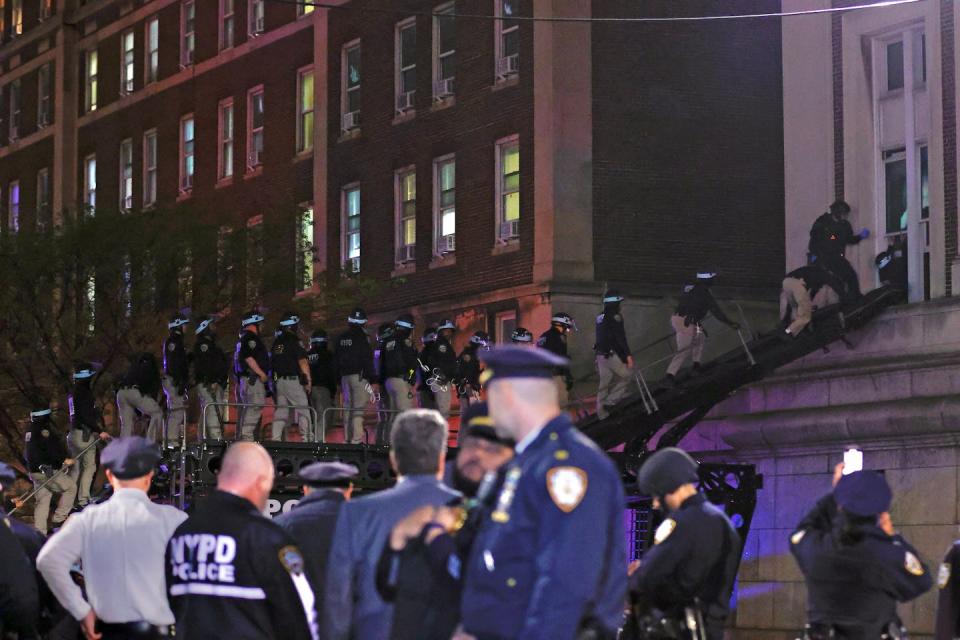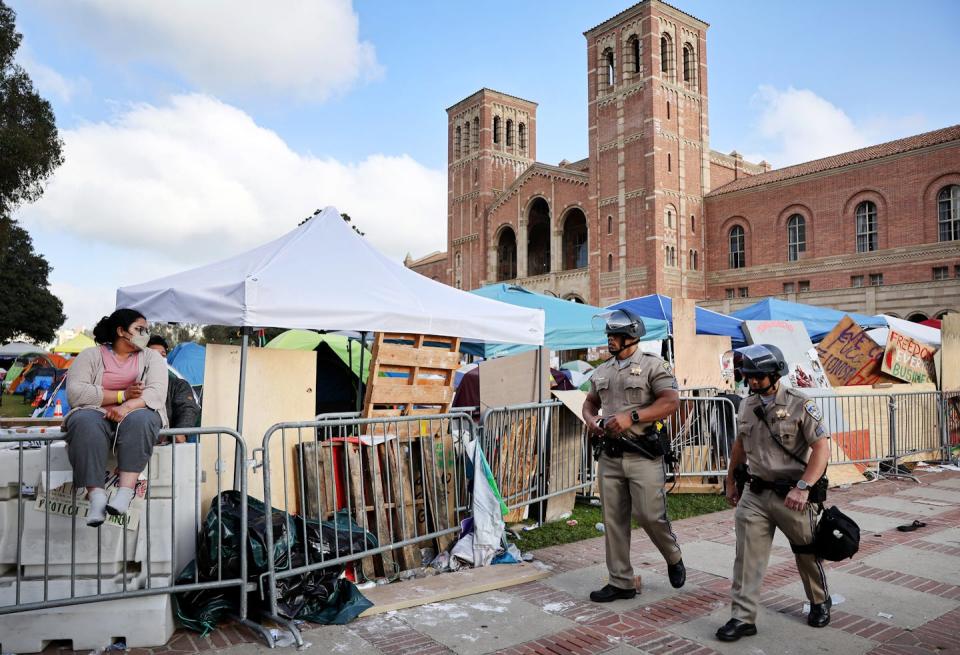Why universities turn to the police to end student protests − and why that can spiral out of control

A two-week standoff between Columbia University administration and student protesters who advocated for the school to divest from companies that work in or support Israel culminated on April 30, 2024, one day after a group of students occupied a campus building, Hamilton Hall.
New York police arrested 109 demonstrators at Columbia and 173 other demonstrators at City College, in uptown Manhattan, on April 30.
The Conversation U.S. politics and society editor Amy Lieberman spoke with John J. Sloan III, a scholar of crime and police on college campuses at the University of Alabama at Birmingham, to better understand the different roles that police play on university and college campuses.

How do universities differ in working with police?
The first documented appearance of a sworn police officer patrolling a college campus was in 1894 at Yale University.
Generally, there have been two approaches to police on university or college campuses. Initially, university administrators asked local police to respond to issues with antiwar demonstrators during the Vietnam War and with women’s rights protests in the 1960s. When many of those encounters did not go very well for anyone, campus police departments were created. Today, about two-thirds of universities and colleges – mainly public ones, like University of California, Los Angeles – have their own campus police departments. There is no difference between these campus police officers and their municipal counterparts, in terms of training or legal authority.
Another one-third of colleges and universities ultimately chose to instead hire their own private security guards – not police officers. Columbia and other Ivy League schools, as well as other private institutions like Johns Hopkins University, are in this group. Increasingly, many of these guards are armed.
One reason different options were taken was because the legalities of creating a police department at a private school are more complex than are those for creating police departments at public universities. Aside from these logistics, there have also been image concerns about whether schools really wanted to have armed, uniformed police on their campuses.
Does this difference in police or private security matter, practically?
Colleges and universities that have their own police departments frequently have a memorandum of understanding or mutual aid agreement that formalizes the relationship between campus and municipal police. Often, both groups will train together to better coordinate their response to, say, a mass shooting on campus. It’s likely that in the post-George Floyd era, mutual training included responding to campus protests.
For schools without campus police, security personnel may lack extensive training in how to deal with demonstrations. As a result, things can spiral very quickly. I would imagine that Columbia’s president made the most recent call to bring in the NYPD because of a combination of factors – including that private security personnel may not have been fully trained and equipped to address the situation, plus the perceived urgency of the situation of students taking over a university building.
What else is notable about how different schools have responded to these protests?
There appears to be a wide range in both university and police responses to the protests. On the one end is the Columbia situation, where you literally had NYPD officers using drones and other types of military tactics to take the building back that the students first occupied on April 29.
At the University of Wisconsin, Madison – which has its own campus police department – the university president also made the decision to call in the Madison police, perhaps for different reasons. This gets to the question of how university administrators want to deal with these protests. Do they want to wait out the protesters? And if they don’t want to wait them out, then how quickly do they want the campus cleared?
I certainly understand there is a need to ensure that the campus is secure. But when you invite local or state police to campus to address protests, you are turning over control of the situation to them and you are relying on them having the necessary training and preparation to come in and not create more problems. What I have seen so far, at least, is those who have called in outside law enforcement are going to have to answer questions about the use of force that was used against protesters.

What is important to know about the police’s tactical response to the protests?
New York Mayor Eric Adams spoke at a press conference and explained the NYPD’s approach to entering and clearing the Columbia campus and it reminded me of military tactics. He talked about how the NYPD had drones flying around to pinpoint better access points into the building and where the students were. He discussed encrypting the police’s radio frequency, so no one could listen to them. The garb that the police were wearing and the visuals of so many officers marching down the street reminded me of an army.
Adams said that no one was hurt at Columbia, but there are reports that show three students were hurt, as well as potentially some police officers. There have also been reports of police officers being injured at University of Wisconsin, Madison.
In other places, like UCLA, there has been a heavy outside police presence on campus, as well as reports of police officers using pepper spray and tear gas on protesters there and in other places like Florida. And at the University of Texas, Austin, officials called in state troopers to arrest protesters this week. Police using pepper spray and other aggressive tactics were reported there as well.
Part of this phenomenon involves the extent the police, nationwide, are becoming more and more militarized as a standard operating procedure. The Ohio State University purchased a surplus military armored personnel carrier for its police team in 2013, for example.
In the post-9/11 era, initial law enforcement concerns were with terrorism; now, the concern is mass shooters. In response, many police departments, including those at colleges and universities, are now routinely using military-grade surveillance, communications, equipment and training as part of their operations, such that it can look like you have the military on your campus.
This article is republished from The Conversation, a nonprofit, independent news organization bringing you facts and trustworthy analysis to help you make sense of our complex world. It was written by: John J. Sloan III, University of Alabama at Birmingham
Read more:
College administrators are falling into a tried and true trap laid by the right
Cops on campus: Why police crackdowns on student protesters are so dangerous
John J Sloan, III has received funding from the National Science Foundation, Bureau of Justice Assistance, Office of Community Oriented Policing, and the National Institute of Justice.

